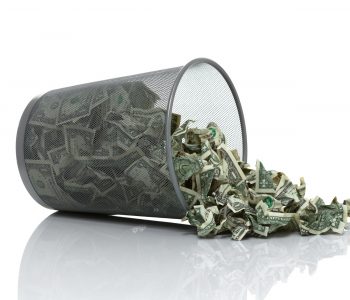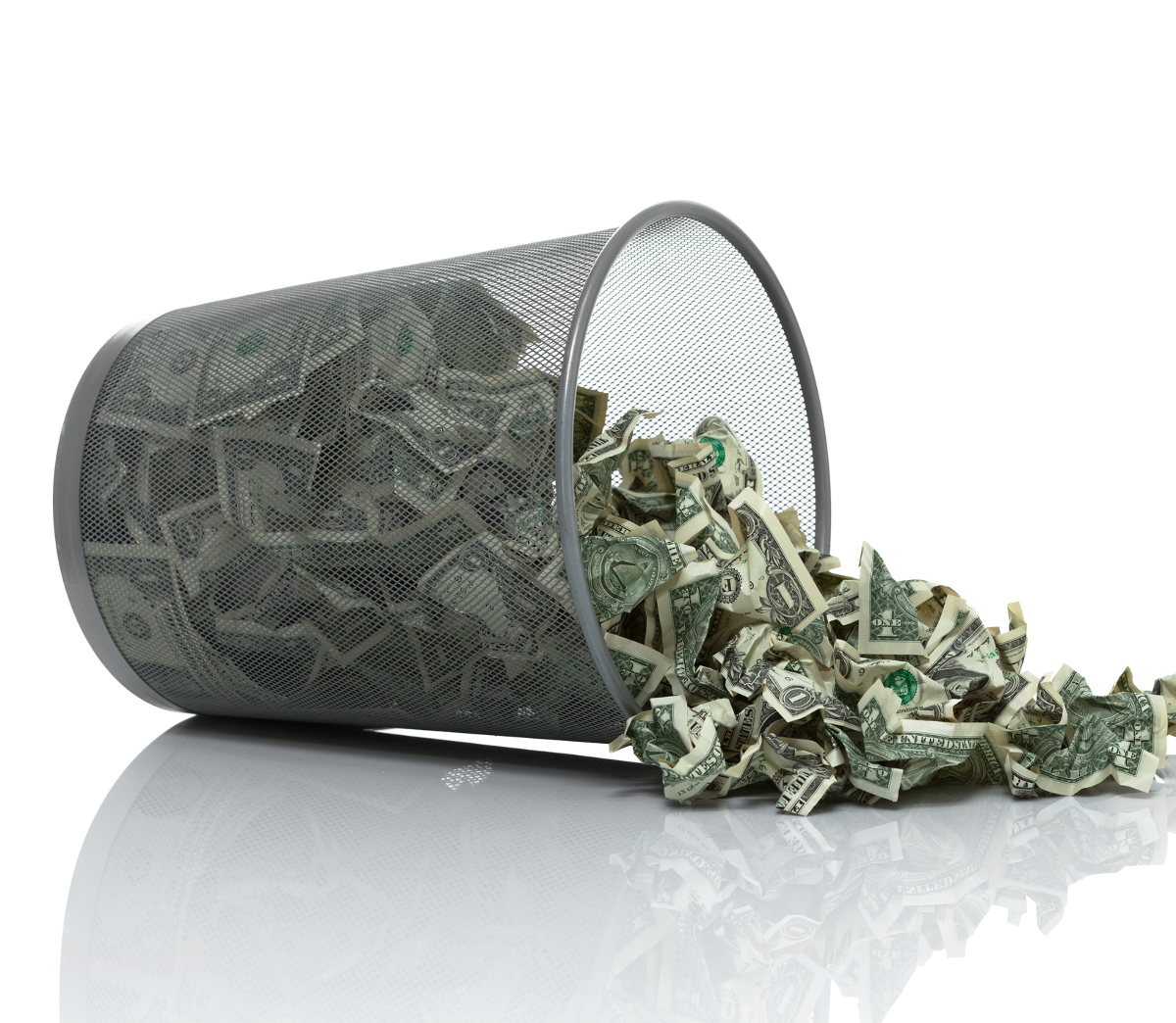5 Best Junk Bond ETFs for 2017 That Pay a Monthly Dividend

Junk Bonds ETFs
Have you ever tried looking for an investment product which offers a steady income stream and a high yield at the same time? Well, look no further than a junk bond exchange-traded fund (ETF).
Not only do junk bond ETFs offer a steady income and high yield, but they also benefit from being a diversified investment product. This is because there are many junk bonds held within a single ETF, ranging from 30 to 80 to even hundreds. Another form of diversification comes from investing in different sectors, geographic business operations, and government entities.
This sounds very appealing to me, which is why I have provided a list of junk bonds below that pay a monthly dividend to unitholders. But before getting into the junk bond ETF list, I will go into more detail of what a junk bond ETF is and the benefits of owning one.
What Is a Junk Bond ETF?
A junk bond is a non-investment grade bond that offers a high yield. These bonds are offered by a company as a debt instrument used to raise money for investment purposes, operating costs, and acquisitions. In return, investors receive returns in the form of interest for a given time period, which is determined before the bond is made available. When the interest payments stop, it means the principal amount will be returned; this occurs on what is known as the maturity date.
What makes a bond a non-investment-grade/junk bond is a credit rating of Ba1/BB+ or lower. The credit rating is based on the future business outlook, current financial statements, and how much cash flow is remaining after paying all expenses. The credit ratings on bonds are set by Moody’s Corporation (NYSE:MCO), Standard & Poor’s, and Fitch Group Inc.
Benefits of Owning a Junk Bond ETF
Owning a junk bond ETF has a few major advantages over high-yielding stock ETFs, which come down to preservation of capital and the income received from the investment. Investments within a junk bond ETF are required to pay out a steady income, return on principal on a specific day, and being at the top of the corporate structure. All this is explained in more detail below.
1. Steady Income
The great advantage of owning junk bonds is that the income is known before the bond is actually trading on the markets. The terms of the interest rate, maturity date, and payment date are all given to investors once the junk bond is formed. In other words, the income from owning a junk bond ETF would be very steady.
The payment of each junk bond within the ETF is a fixed amount. This is a major advantage over high-yielding stock ETFs, which always see a cut in their dividend based on management’s efforts to preserve cash flow. If this same company had a bond issue instead, there would be no impact on the interest income received.
2. Receiving the Return on Principal
When owning a stock, you don’t know what the share price will be trading at in the future. Being a junk bond investor actually takes this risk away, since there is a payout to look forward to.
Therefore, being a junk bond ETF investor could result in the capital invested being preserved. This is as important as receiving the income and could result in the daily price movement of the ETF not seeing as much volatility as a high-yielding stock ETF.
3. At the Top of the Corporate Structure
When investing in a company, whether it be via a dividend-paying common stock, a preferred stock, or bonds, there is an order of priority of investors. Bond investors are paid first using interest payments, which must be the full amount. Next are preferred shareholders, followed by common shareholders last.
This is the great thing about owning a junk bond ETF: the investments will pay out a high yield and are received before any other investor is paid. To add more to the total return, there is the potential for capital gain appreciation.
Best Junk Bonds ETF List
| ETF Name | Ticker |
Price |
Yield |
| iShares Emerging Markets High Yield Bond ETF | EMHY | $50.65 | 6.62% |
| Guggenheim BulletShares 2020 High Yield Corporate Bond ETF | BSJK | $24.85 | 4.78% |
| First Trust Exchange-Traded Fund IV | HYLS | $49.41 | 5.55% |
| JPMorgan Disciplined HY ETF | JPHY | $51.46 | 4.77% |
| iShares Fallen Angels USD Bond ETF | FALN | $27.49 | 5.79% |
1. iShares Emerging Markets High Yield Bond ETF
iShares Emerging Markets High Yield Bond ETF (BATS:EMHY) is designed to track the investment of the Morningstar Emerging Markets High Yield Bond Index. At least 90% of the assets are invested in the securities that make up the underlying index. The remaining funds are invested in futures contracts, options, swap contracts, and cash investments.
There are more than 400 high-yield bonds from around the world within EMHY. What’s more, no holding represents more than three percent of total assets. The bonds would represent an ownership in those issued by both government entities and companies based outside the U.S. Even though the bonds are held outside the U.S., there is no currency risk because they are only U.S. denominated bonds.
EMHY is a high-yield junk bond ETF which is paid on a monthly basis.
2. Guggenheim BulletShares 2020 High Yield Corporate Bonds ETF
Guggenheim BulletShares 2020 High Yield Corporate Bond ETF (NYSEARCA:BSJK) is a very unique junk bond ETF. BSJK seeks to track the results of the NASDAQ BulletShares USD High Yield Corporate Bond 2020 Index.
This product would be for investors looking to invest until 2020, when all the maturities. The last day of this product will be December 31, 2020, which will see the capital returned back to investors.
All the bonds that are invested in are based in the U.S. Greenback, which removes the risk of foreign exchange. Two-thirds of every dollar is invested in companies based in the U.S. The top three countries outside the U.S. are Canada, the Netherlands, and Japan, which all add greatly to the global diversification.
The two sectors with the largest exposure are industrial and financial, which include names such as Fiat Chrysler Automobiles NV (NYSE:FCAU), Navient Corp (NASDAQ:NAVI) and Icahn Enterprises LP (NASDAQ:IEP).
3. First Trust Tactical High Yield ETF
First Trust Tactical High Yield ETF’s (NASDAQ:HYLS) number one goal is to generate a current income which flows to holders of the ETF. Its secondary objective is to account for a capital appreciation.
HYLS uses a very unique investment strategy: it invests in high-yield bonds that are held long, while part of the portfolio is short. Long investing means buying and earning an income from the investment, and if the price just happens to increase, then it will add to the total return. In this case, long investing accounts for at least 80% of the total capital.
The rest of the capital uses a short investing strategy, borrowing the high-yield bond and profiting from the price decreasing. This would only apply to bonds with a high probability of having cash flow issues and seeing their price decrease as a result. There is also a high probability that the company may need to restructure itself, which would result in the bond decreasing in price and HYLS generating a profit.
Almost half the capital is invested in the healthcare, hotel, restaurants & leisure, and media sectors. The high-yield bonds include the likes of SoftBank Group Corp (OTCMKTS:SFTBF), MGM Resorts International (NYSE:MGM), and Six Flags Entertainment Corp (NYSE:SIX).
4. JPMorgan Disciplined High Yield ETF
JPMorgan Disciplined High Yield ETF (BATS:JPHY) invests at least 80% of its assets in high-yield bonds, with the rest invested in convertible securities, real estate investment trusts, preferred shares, and private placements.
For a security to be held within JPHY, it must pass a multi-factor security selection process based on its liquidity and the issuer’s quality. Adjustments are made to the portfolio holdings to ensure it is diversified based on the issuer, sector, and the geographic location of revenue.
There are over 200 high-yield bonds held, with the largest position representing just under two percent of the total invested capital. The three largest sectors are industrials, financials, and utilities.
JPHY is one of the best junk bonds ETFs due to its financial discipline and because it is managed by one of the largest financial companies in the country. This has helped JPHY pay its holders on a monthly basis.
5. iShares Fallen Angels USD Bond ETF
iShares Fallen Angels USD Bond ETF (NASDAQ:FALN) seeks to replicate the returns of the Bloomberg Barclays U.S. High Yield Fallen Angel 3% Capped Index. The index includes U.S.-based bonds and high-yield corporate bonds that were once known as investment-grade bonds. At this time, it enjoys junk bond status (non-investment grade bonds). Ninety percent of the assets are invested in the securities that make up in the underlying index. There may be times that 10% of assets are invested in future contracts, options, swap contracts, and cash and cash equivalent investments.
FALN owns more than 100 high-yield bonds and investors are paid monthly. More than half of the assets are invested in companies based out of the U.S. The top three sectors are industrials, financial institutions,and utilities.











